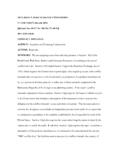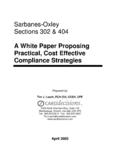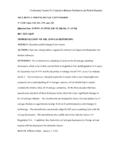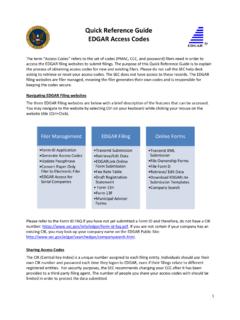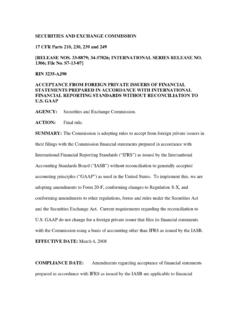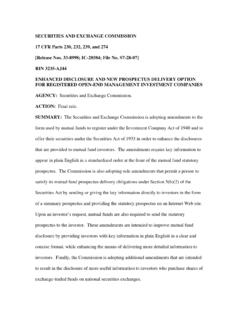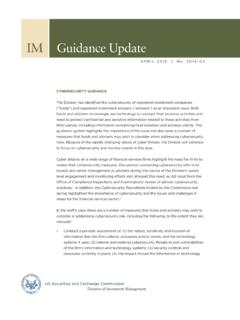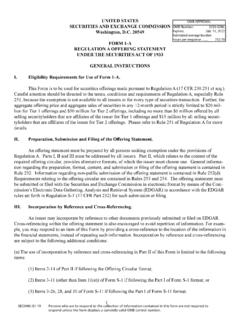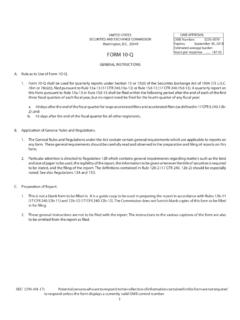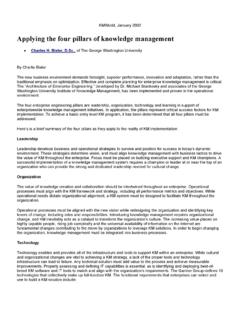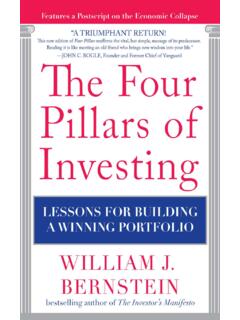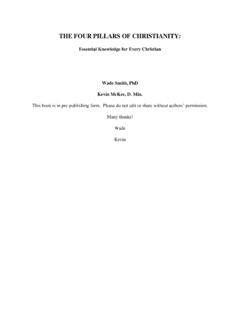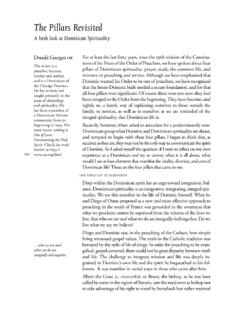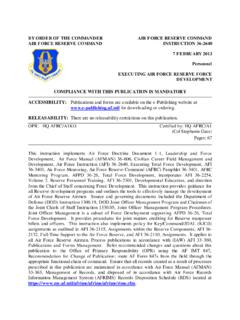Transcription of The four Pillars of financial Regulatory Reform - …
1 The four Pillars of financial Regulatory Reform By: Norman B. Arnoff Esq. Section 913, Title IX, Investor Protection of the Dodd-Frank Wall Street and Consumer Protection Act of 2010 (Dodd-Frank) authorizes the Securities and Exchange Commission (SEC) to promulgate rules establishing a uniform fiduciary duty standard for broker-dealers no less stringent than investment advisers and Sections 921 and 1028 of Dodd-Frank provide that the SEC shall also promulgate rules to accord the investor an informed and independent choice, separate from the other conditions in opening up an account whether to arbitrate or litigate should a dispute arise.
2 Public investors and customers of investment professionals invest significant portions of their net worth and life savings for their retirement in the capital markets whether the investment is through a traditional customer broker account or in a qualified retirement plan serviced by an ERISA fiduciary and therefore there must be real and effective financial Regulatory Reform . What Dodd-Frank has done was to lift the covers off our financial system to start a process of Reform , which in a material way will require those persons who serve others in the capital markets as professionals to not be mere selling agents for the issuer or financial service firm but responsible professionals.
3 This very important Reform will come to naught unless the other parts of the system's framework are put in place to generate clear and workable professional standards to create better means to test whether the system is really working in the best interest of the main street investor and to provide greater attention and resources to fair compensation of the victims when the breach of professional standards results in economic harm. While clear and precise definition will not be given in every situation involving the broker-customer or the adviser and his or her client as a whole the system will operate collectively as a fiduciary to protect those who entrusted their funds and securities to the capital market processes and its investment professionals.
4 This will occur whether the individual investor has retained choices with respect to making investment decisions and has accepted responsibility for his or her decision making or an investor who has entrusted the decisions and complete authority to act in his or her investment professional. On October 9, 2014 the SECs Investment Advisory Committee announced their recommendations on accredited investor status in Regulation D private offerings, now one of the important ways capital is raised for start-ups and other businesses that need capital but do not want to file a full blown registration statement and have a public offering.
5 The Committee has also supported a Uniform Fiduciary Duty Standard for Broker-Dealers no less stringent than the standard for investment advisers that will raise the level of the standard of conduct for stock brokers moving them from a sales mindset to one of true professionalism. Little definition has been given to the latter recommendation pointing to a need of a clearer perspective and a more holistic approach to financial Regulatory Reform . This article is putting forward four (4) key proposals for heightened professionalism in our capital markets and financial services industry that the author believes will result in more effective financial Regulatory Reform and investor protection.
6 The proposals and rationale are as follows: I. Heightened professionalism for distinct professional groups such as investment advisers and broker-dealers will come about where each professional group sets its own standards in a self- Regulatory organization ("SRO") focused upon the unique aspects of their professional activities pursuant to SEC oversight and approval of their standard setting and rule making. This is why it is now appropriate to have an investment adviser SRO comparable to FINRA for '40 Act Investment Advisers and not have that function absorbed by FINRA.
7 II. Implementation of independent private sector compliance auditing to close time and resource gaps that exist, and will always exist in respect to the SEC and the SRO organizations in connection with their examinations is now essential to expand and achieve more in-depth exam coverage and achieve more meaningful Reform . III. Reform of the arbitration, mediation, and claims processes has to occur by allowing any party in an arbitration to have the right to a reasoned award and an internal appeals process within the SRO that will achieve greater transparency for enforcement, rule-making, and the sound and principled development of the federal and state securities laws.
8 The claims process is the best practical source of information of what is going wrong and what needs to be done to correct it in respect to the main street investor. In cases of massive fraud and systemic flaws that significantly affect many investors, a broader approach of collective remediation to achieve fair investor compensation comparable to the Prudential Bache Limited Partnership Class Action Settlement process that took place in the 1990's should be an approach to consider. It was a collective mediation-arbitration process that sought to cover legitimate investor loss that SIPIC by law did not cover.
9 IV. Also essential will be mandatory professional liability insurance for the smaller firms that do not have the capacity to self-insure from their own capital resources and that will cover investor losses when the investment professional breaches his or her professional group's promulgated standards resulting in economic harm. Such mandatory professional liability insurance will also provide an additional dimension of self-regulation and risk management in the insurance underwriting process. Firms too with significant compliance risks will be uninsurable and in consequence not qualified to do business.
10 A high risk and non-insurable firm will not get insurance and lose their registration status unless prompt corrective measures are taken and insurance then obtained. The foregoing is a more holistic approach to financial Regulatory Reform that should give greater protection to the main street investor. The recommendations of the Investment Advisory Committee are at the least pointing us in that direction in the development of private sector independent compliance auditing. A. Accredited Investor Status On October 9, 2014 the Investment Advisory Committee made their recommendations regarding the definition of the Accredited Investor.

